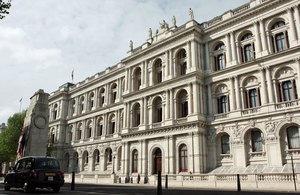3 anglers fined just under £1,000 for fishing illegally in Norfolk
Gordon West, of Benfleet, Essex, was caught fishing without a licence on 23 November 2021 at Martham Pits, Norfolk. John Ellingham, of Peterborough, Cambridgeshire, was caught fishing during the close season on 1 May 2022 on the River Bure near Wroxham, Norfolk. Sam Reynolds, of Bacton, Norfolk, was caught fishing without a licence and having left 2 rods unattended on 5 April 2022 at Coston Carp Lakes, Coston, Norfolk.
All 3 cases were heard at Hastings Magistrates Court. The court fined West £220 and Reynolds £197 and ordered them both to pay a £34 victim surcharge and £135 in costs. Ellingham was fined £138 and ordered to pay a £34 victim surcharge and £65 costs. All 3 fines total £992 – this is 22 times more than the current price of a £45 fishing licence.*
Enforcement Team Leader, Lesley Robertson, said:
These cases show we pursue offenders through the courts and won’t hesitate to take enforcement action where anglers break rules. Anyone found fishing illegally may face prosecution and a fine of up to £2,500.
The close season is in place to allow an uninterrupted spawning period and helps to protect vulnerable species. It also provides an opportunity for the Environment Agency and partners to carry out projects up and down the country to further enhance habitats vital for improving fish spawning.
All anglers need a valid Environment Agency fishing licence. The money raised through the sales of fishing licences is re-invested and enables us to improve all fisheries, including rivers, for anglers.
Our fisheries enforcement officers routinely undertake licence checks, and we urge anyone with information about illegal fishing to contact us on 0800 807060.
Licences now run 365 days from the day of purchase offering 12 full months of fishing.
Any angler aged 13 or over, fishing on a river, canal or still water needs a licence. A 1-day licence costs from just £6, and an annual licence costs from just £30. Concessions are available. Junior licences are free for 13 to 16 year-olds.
For more information or to buy a fishing licence visit the GOV.UK website or call the Environment Agency on 0344 800 5386. Alternatively, you can purchase a licence from your local Post Office branch.
The Environment Agency carries out enforcement work all year round and is supported by police forces and the Angling Trust. Fisheries enforcement work is intelligence-led, targeting known hot-spots and where illegal fishing is reported.
Anyone with information about illegal fishing activities should report it to our incident hotline number 0800 807060. You can also report it to Crimestoppers anonymously on 0800 555 111.
*£45 is the cost of a 12-month trout and coarse 3-rod fishing licence.
Charges:
Gordon West and Sam Reynolds pleaded guilty to breaching Section 27(1)(a) of the Salmon and Freshwater Fisheries Act 1975.
Sam Reynolds pleaded guilty to breaching Byelaw 10 of the Environment Agency National Byelaws which came into force on 27 May 2001 made pursuant to Section 210 and Schedule 25 of the Water Resources Act 1991 and contrary to Section 211 of the said Act.
John Ellingham pleaded guilty to breaching National Byelaw 2 of the Environment Agency Byelaws made on the 12 July 2010 and contrary to National Byelaw 6 confirmed 23 March 2010 made pursuant to sections 210 and 211 schedule 25 of the Water Resource Act 1991.
They were sentenced at Hastings Magistrates’ Court on 29 July 2022.
